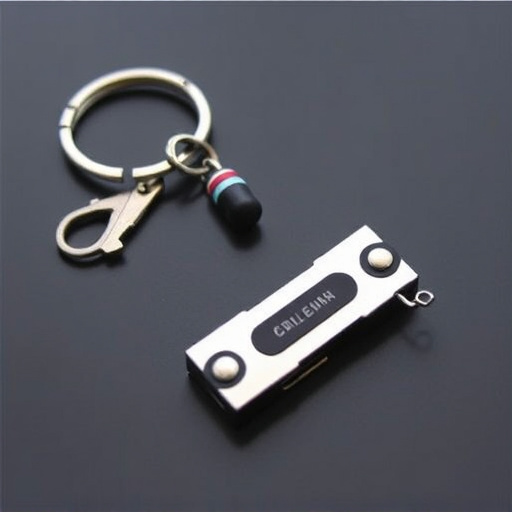Women's safety is paramount when choosing self-defense tools, with legal restrictions on keychain weapons varying by region. Understanding local laws regarding the Prohibited Keychain Weapons List is crucial to carrying effective yet legal defensive tools, offering peace of mind in public and isolated areas. Size, weight, material quality, ease of use, and legal compliance are key considerations for designers, balancing effectiveness with adherence to prohibited lists. Responsible usage, discreet designs, and regular practice build confidence while emphasizing the goal of emergency backup, not intimidation.
Personal safety is a top concern for women worldwide. With an increasing focus on self-defense, there’s a growing interest in compact, easily accessible defensive tools. This article explores the concept of keychain weapons designed for women’s safety, delving into legal considerations, popular options (including a prohibited keychain weapons list), and practical tips for responsible use. Understand the issues, equip yourself, and empower your personal safety journey.
- Understanding Personal Safety Concerns for Women
- Legal Framework: What Makes a Weapon 'Prohibited'?
- Keychain Weapons: A Comprehensive List
- Design Considerations for Effective Self-Defense
- Empowering Women: Responsible Use and Carry Tips
Understanding Personal Safety Concerns for Women
Women often face unique safety challenges, and understanding these concerns is paramount when considering self-defense tools like a keychain weapon. In many public spaces, certain weapons are prohibited due to legal restrictions, which primarily aim to maintain public safety. The Prohibited Keychain Weapons List varies across jurisdictions, but it typically includes objects that can cause harm or be used as weapons in an unauthorized manner.
Personal safety for women involves navigating various scenarios, from everyday streets to isolated areas. It’s about empowering individuals to protect themselves against potential threats and knowing their rights regarding self-defense. By being aware of local laws and carrying a small, legal defensive weapon like a keychain, women can gain peace of mind while ensuring they have a means of protection when facing dangerous situations.
Legal Framework: What Makes a Weapon 'Prohibited'?
In many countries, the legal definition of a “prohibited” keychain weapon is strictly regulated and varies based on local laws. Generally, these laws consider factors such as blade length, overall size, and purpose. For instance, small knives or blades that can easily fit into a pocket or purse might be permitted, while larger combat-style knives are typically prohibited. The Prohibited Keychain Weapons List includes items like switchblades, automatic knives, and certain types of daggers.
The classification of a weapon as “prohibited” also depends on the context in which it’s carried. Some jurisdictions allow small self-defense tools like pepper spray or personal alarms, but these must comply with specific size and strength regulations. It’s crucial for women considering carrying a defensive keychain weapon to understand their region’s legal framework, ensuring they stay within the boundaries of the law while prioritizing their safety.
Keychain Weapons: A Comprehensive List
When considering defensive keychain weapons, it’s crucial to be aware of both legal and practical limitations. Different regions have varying laws regarding what constitutes a permissible self-defense tool on a keychain. Some states allow certain types of pepper spray, personal stun guns, or even small knifes as defensive tools, while others prohibit them outright. It’s essential to check local legislation before purchasing any keychain weapon.
The Prohibited Keychain Weapons List varies widely across jurisdictions but generally includes any device designed or capable of causing serious physical harm. This means that sharp objects like large knives, machetes, and similar cutting tools are typically banned. Similarly, weapons with a high-power electrical current or chemical agents (like pepper spray) may also be restricted. Always stay informed about your rights and responsibilities as a consumer to ensure you’re carrying an effective yet legally acceptable self-defense tool on your keychain.
Design Considerations for Effective Self-Defense
When designing a defensive keychain for women’s safety, several key considerations come into play to ensure its effectiveness. Firstly, size and weight are crucial factors; the keychain should be compact enough to fit comfortably on a keyring while still maintaining a robust build to withstand impact. Materials play a significant role too; high-quality, durable metal alloys offer better strength and longevity compared to plastic or lighter alternatives.
Another essential aspect is the weapon’s ease of use and accessibility. The keychain should incorporate features that allow for quick deployment during an emergency, such as a reliable locking mechanism and a strategically placed activation button. Additionally, understanding the prohibited keychain weapons list is vital; designs must adhere to legal limits on blade length and overall size to avoid any potential legal complications. Effective self-defense tools strike a balance between power and legality, ensuring women have a means of protection without breaking the law.
Empowering Women: Responsible Use and Carry Tips
Carrying a defensive weapon keychain can empower women to take control of their safety, but it’s crucial to approach this responsibly. Familiarize yourself with local laws and regulations regarding prohibited keychain weapons lists, ensuring you stay within legal boundaries. Learn proper usage techniques and practice regularly to build confidence in handling the device.
When carrying a self-defense keychain, discretion is key. Opt for compact designs that seamlessly fit on your keys without drawing unnecessary attention. Always keep it easily accessible, but avoid ostentatious displays in public spaces. Remember, the goal is to have a backup option for emergencies rather than making others feel unsafe.
Women’s personal safety is a paramount concern, and while legal restrictions vary by region, understanding what constitutes a prohibited keychain weapon is essential. This article has provided an in-depth look at various keychain self-defense options, from legal perspectives to practical design considerations. By knowing the rules and being prepared, women can empower themselves, ensuring they have a tool for protection without compromising their safety or facing legal repercussions regarding prohibited keychain weapons.
